The origins of the massive and sometimes controversial Queen Elizabeth class carrier programme lie in the 1998 Strategic Defence Review.
The review re-evaluated every weapon system (active or in procurement) with the exception of the Eurofighter Typhoon and the Vanguard-class ballistic missile submarines.
The report identified that aircraft carriers offered the following:
- Ability to operate offensive aircraft abroad when foreign basing may be denied.
- All required space and infrastructure; where foreign bases are available they are not always available early in a conflict and infrastructure is often lacking.
- A coercive and deterrent effect when deployed to a trouble spot.
The report concluded:
“The emphasis is now on increased offensive air power, and an ability to operate the largest possible range of aircraft in the widest possible range of roles. When the current carrier force reaches the end of its planned life, we plan to replace it with two larger vessels.”

In November 2004, while giving evidence to the House of Commons Defence Committee, First Sea Lord Admiral Sir Alan West explained that the sortie rate and interoperability with the United States Navy were factors in deciding on the size of the carriers and the composition of the carriers’ air-wings:
“The reason that we have arrived at what we have arrived at is because to do the initial strike package, that deep strike package, we have done really quite detailed calculations and we have come out with the figure of 36 joint strike fighters, and that is what has driven the size of it, and that is to be able to deliver the weight of effort that you need for these operations that we are planning in the future.”
The Queen Elizabeth Class aircraft carriers are the largest surface warships ever constructed for the Royal Navy and will represent a significant increase in capability. The vessels will be utilised by all three branches of the UK Armed Forces and will provide eight acres of sovereign territory. Both ships will be versatile enough to be used for operations ranging from high intensity conflict to providing humanitarian aid and disaster relief.
The class will have increased survivability as a result of the separation and distribution of power generation machinery throughout each ship. The class has been designed with twin islands, which separates the running of the ship from the flying operations resulting in greater visibility of flying operations.

Instead of a traditional single island, the has two smaller islands. The forward island is for ship control functions and the aft (FLYCO) island is for flying control.
The reason for two bridges is, simply put, due to the gas turbine exhausts. The design would have either had two small islands or one large, long island. The two smaller islands were chosen. The location and alignment of the islands are based around the 2.4 metre diameter gas turbine exhausts which were pre-fitted in the island and below in the ship superstructure.
Advantages of the two island configuration are primarily increased flight deck area and reduced air turbulence. Flight control in the aft island is positioned perfectly for aircraft approaches and deck landings.
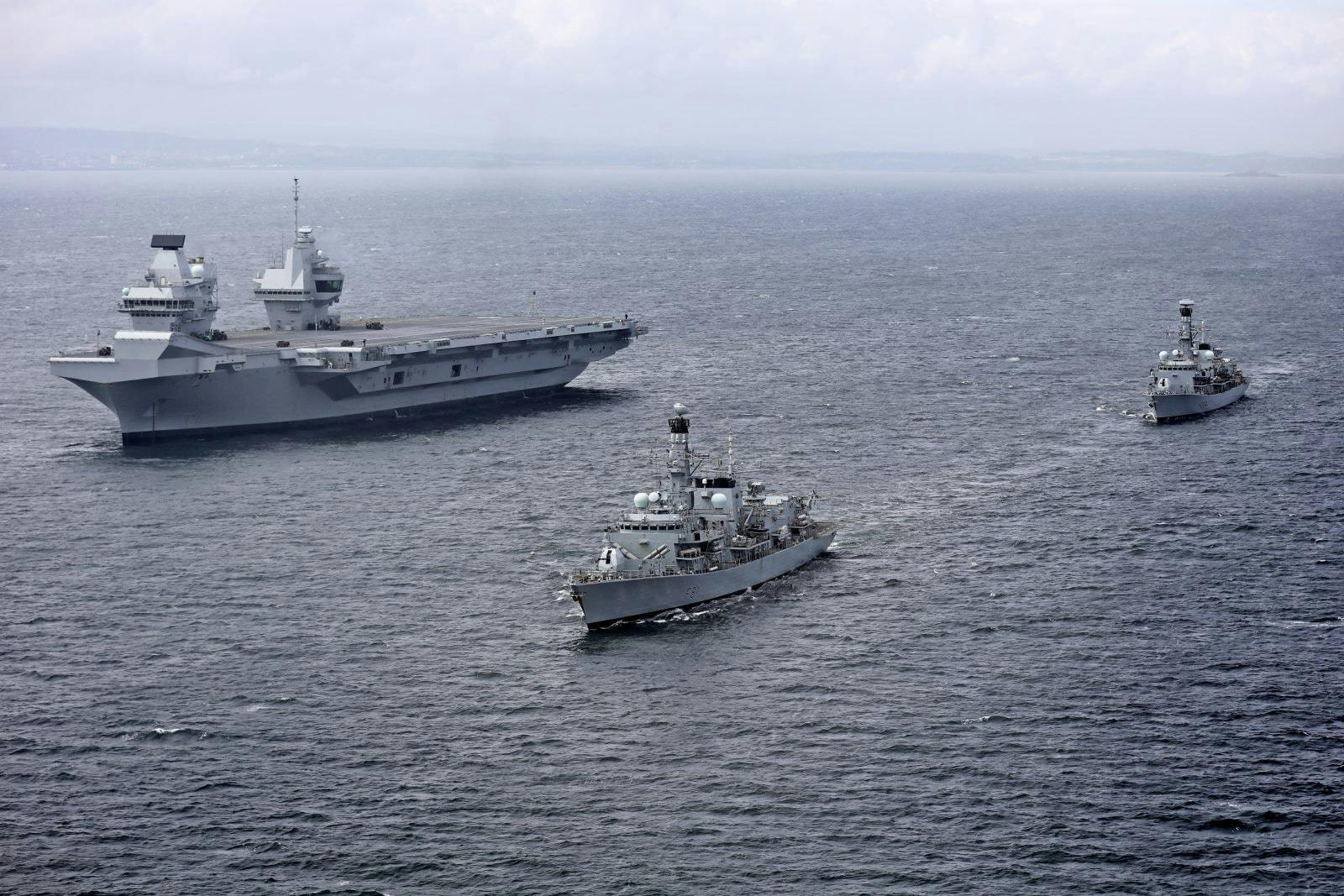
Surprisingly for their sheer scale, each ship will only have a total crew of 800, only increasing to the full complement of 1,600 when the air elements are embarked. This is made possible by extensive automation of many systems.
Before we examine the vessels in depth, let’s just make sure we’re up to speed with the very basics, don’t worry if you forget as there will be a short guide at the end!

The vessels were originally expected to displace about 65,000 tonnes, however as construction continued, the revised estimate of 70,600 tonnes was revealed by the Royal Institute of Naval Architects.
They are built a Short Take-Off and Vertical Landing (STOVL) configuration, deploying the Lockheed Martin F-35B, that simply means they’ll use a ramp to launch aircraft rather than a catapult.
Facilities for crew include a cinema, gym areas and four galleys manned by sixty-seven catering staff. There are four large dining areas, the largest with the capacity to serve 960 meals in one hour. There are eleven medical staff for the eight-bed medical facility, which includes an operating theatre and a dental surgery. There are 1,600 bunks in 470 cabins, including accommodation for a company of 250 Royal Marines with wide assault routes up to the flight deck.

The carrier’s radars are the BAE Systems S1850M for long range wide area search, and the BAE Systems Artisan 3D maritime medium-range radar and navigation radar. The S1850M has a fully automatic detection and track initiation that can track up to 1,000 air targets at a range of 400 kilometres. Artisan can “track a target the size of a soft ball moving at Mach 2 at very low levels over 35 kilometres away”. The carriers will also be fitted with a Glide Path Camera to assist with aircraft operation.
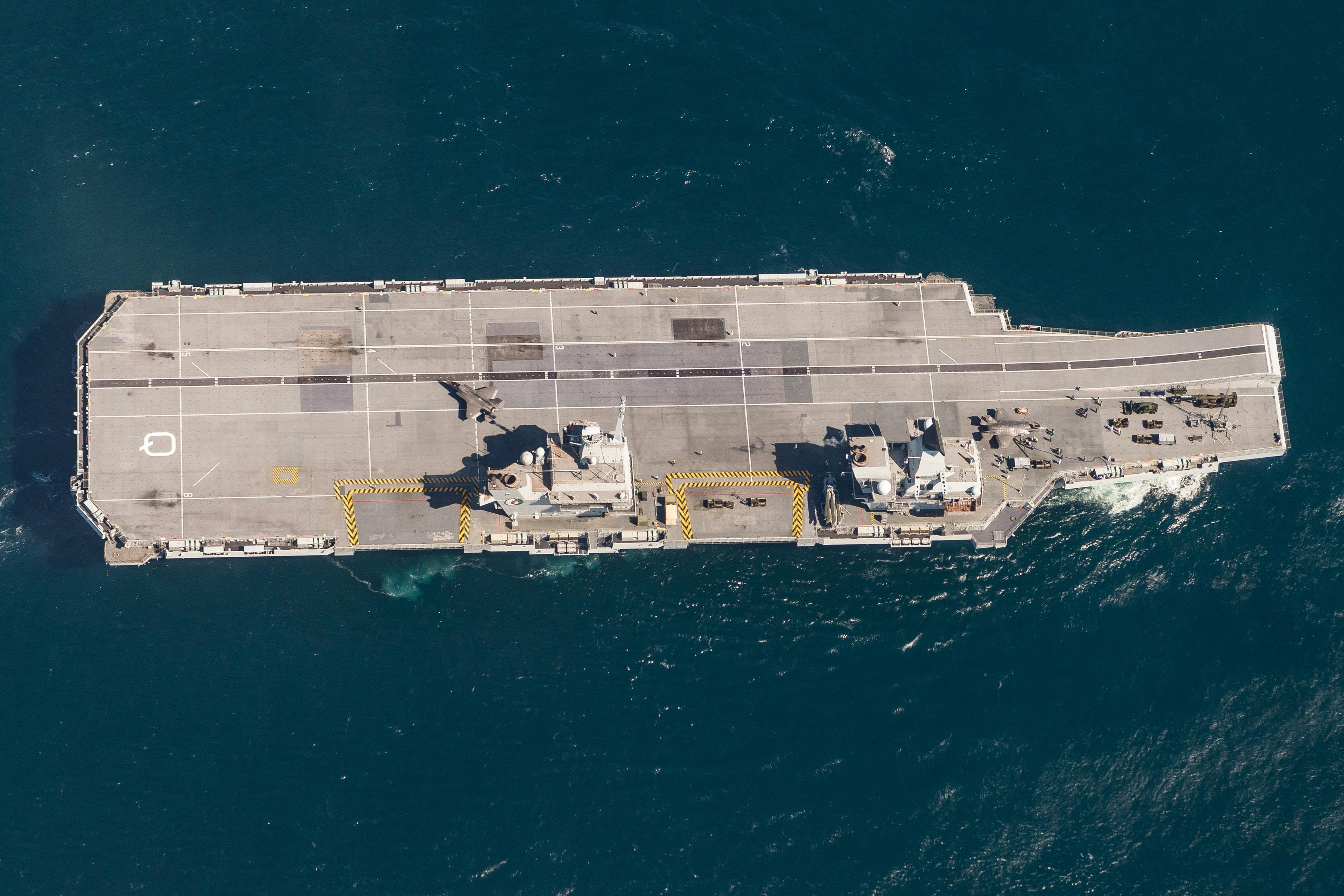 As for propulsion and somewhat understandable given the overwhelming public and news media reaction to the slightest of cost increases, the MoD has decided not to use nuclear propulsion because of its high cost and has chosen a propulsion system based on Rolls-Royce’s integrated electric propulsion system. The propulsion system will consist of two Rolls-Royce Marine 36MW MT30 gas turbine alternators, providing over 70MW and four diesel engines providing approximately 40MW, with the total installed power approaching 110MW.
As for propulsion and somewhat understandable given the overwhelming public and news media reaction to the slightest of cost increases, the MoD has decided not to use nuclear propulsion because of its high cost and has chosen a propulsion system based on Rolls-Royce’s integrated electric propulsion system. The propulsion system will consist of two Rolls-Royce Marine 36MW MT30 gas turbine alternators, providing over 70MW and four diesel engines providing approximately 40MW, with the total installed power approaching 110MW.
Now for perhaps the most complex system, the munitions handling system. It is something truly innovative in the Queen Elizabeth class, it accomplished using a highly mechanised weapons handling system (HMWHS). This is a first naval application of a common warehouse system.
The HMWHS moves palletised munitions from the magazines and weapon preparation areas, along track ways and via several lifts, forward and aft or port and starboard. The tracks can carry a pallet to magazines, the hangar, weapons preparation areas, and the flight deck. In a change from normal procedures the magazines are unmanned, the movement of pallets is controlled from a central location, and manpower is only required when munitions are being initially stored or prepared for use. This system speeds up delivery and reduces the size of the crew by automation.

When I toured the vessel a few years back I was taken aback by the sheer scale of the HMWHS, spaces within the magazine and the level of protection this system has from combat damage. The system was massive in scale, easily the size of a medium supermarket and served by a complex rail system. Needless to say, I managed to trip over it!
Something often overlooked in these types of vessels is there ability to launch small boats, the Queen Elizabeth class have a number of boat bays on the sides of the vessels inside the sponsons, capable of deploying boats by lowering them down into the water, to ferry personnel around, either from ship to ship or between ship and port. The necessity of this is evident when you realise that the scale of these vessels mean that it will not be able to dock at many ports.
The UK is committed to both the F-35 and the Queen Elizabeth Carrier programmes, both of which are on track to enter initial maritime operating capability in December 2020 as planned.
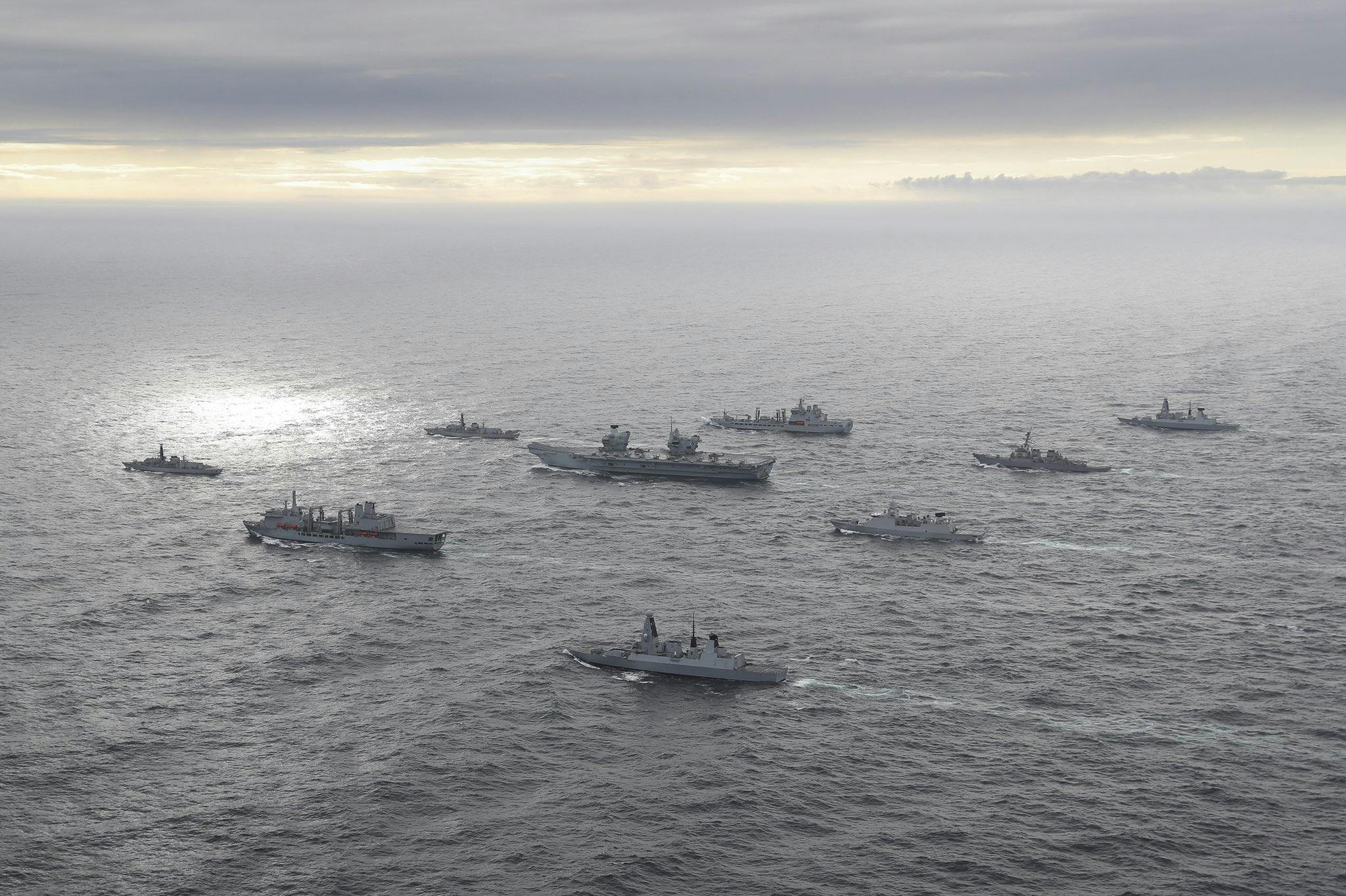
What will the vessels carry?
The term now used for the carriers embarked squadrons is ‘Carrier Air Wing’ (CVW). The vessels are capable of deploying a variety of aircraft in large numbers, up to a maximum in the upper fifties in surge conditions.

Captain Jerry Kyd, former commander of HMS Queen Elizabeth, commented on the initial deployment and the gradual increase in air wing numbers:
“We are constrained by the F-35 buy rate even though that was accelerated in SDSR in 2015, so initial operating capability numbers in 2020 are going to be very modest indeed. We will flesh it out with helicopters, and a lot depends on how many USMC F-35s come on our first deployment in 2021. But by 2023, we are committed to 24 UK jets onboard, and after that it’s too far away to say.”

In addition to the joint force of Royal Air Force and Royal Navy F-35Bs and their pilots, the air wing is expected to be composed of a ‘Maritime Force Protection’ package of nine anti-submarine Merlin HM2 and four or five Merlin for airborne early warning; alternatively a ‘Littoral Manoeuvre’ package could include a mix of RAF Chinooks, Army Apaches, Merlin HC4 and Wildcat HM2.
It is my understanding that vessel would still carry at least one F-35 squadron aboard in such circumstances to offer air defence as well as support to the helicopter assault activities.
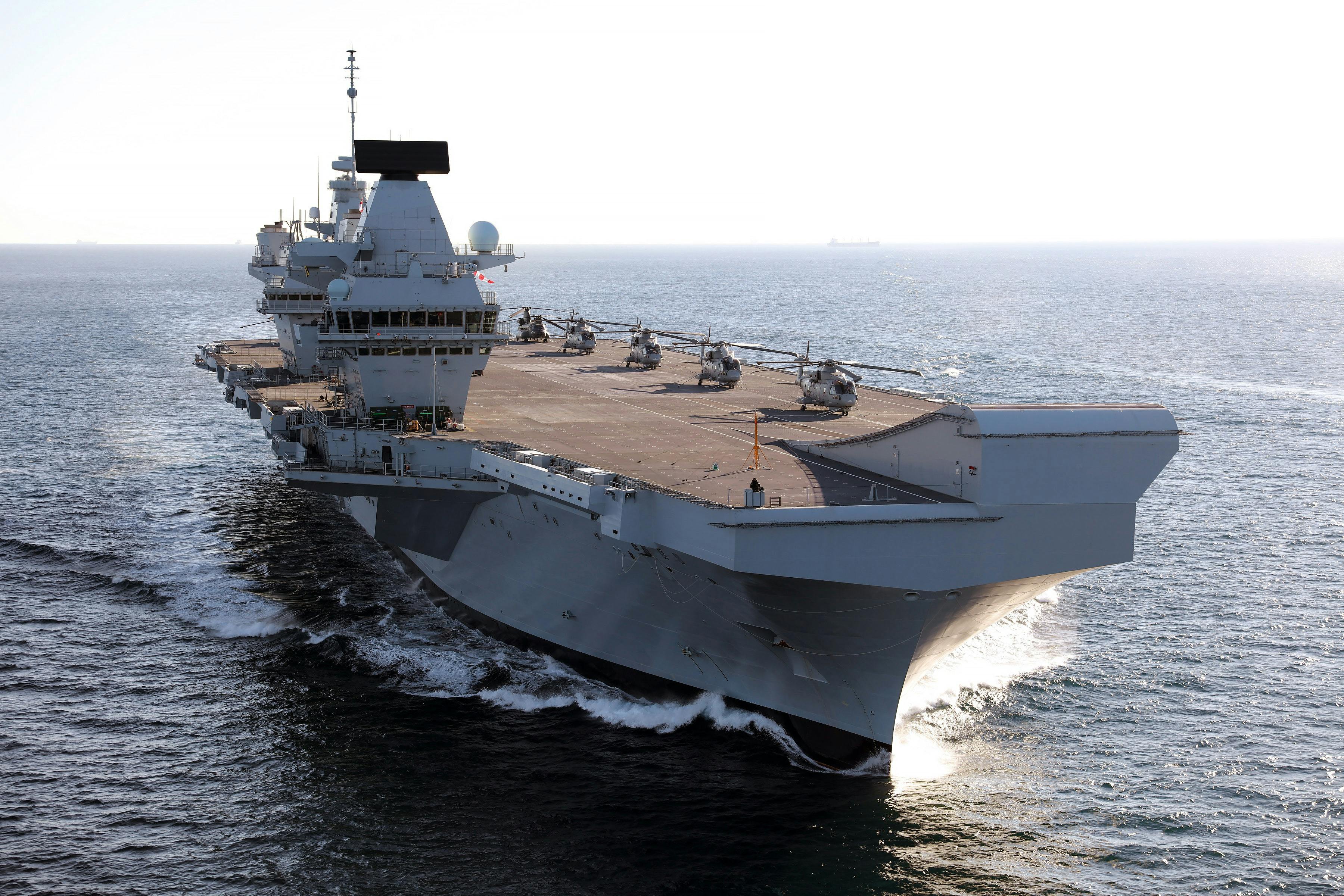 The Crowsnest AEW&C aircraft will come from a number of the embarked Merlins (any of which can be fitted with the sensor package), the number again scaling with requirements.
The Crowsnest AEW&C aircraft will come from a number of the embarked Merlins (any of which can be fitted with the sensor package), the number again scaling with requirements.
Around the time the first carrier deploys operationally, the UK will have 42 F-35 aircraft, with 24 being front-line fighters and the remaining 18 will be used for training (at least 5 on the OCU), be in reserve or in maintenance.
Uniquely for a vessel of this type, it will be common to see the jump-jet F-35B appear to land conventionally. This is a process called Shipborne Rolling Vertical Landing (SRVL). It is a process designed to land jump-jet aircraft that uses both the vertical thrust from the jet engine and lift from the wings, thus maximising the payload an aircraft can return with and stopping the financial waste that comes with dropping expensive weaponry in the sea in order to land vertically.

SRVL landing is under development for use with the F-35B when it enters service in 2018. Rolling landings will enable the F-35B to land on these carriers with an increased weapon and fuel load and will use the aircraft’s computer controlled disc brakes. However, a number of defence analysts have suggested that operational SRVL landings may only be possible within a limited range of sea states and weather conditions.
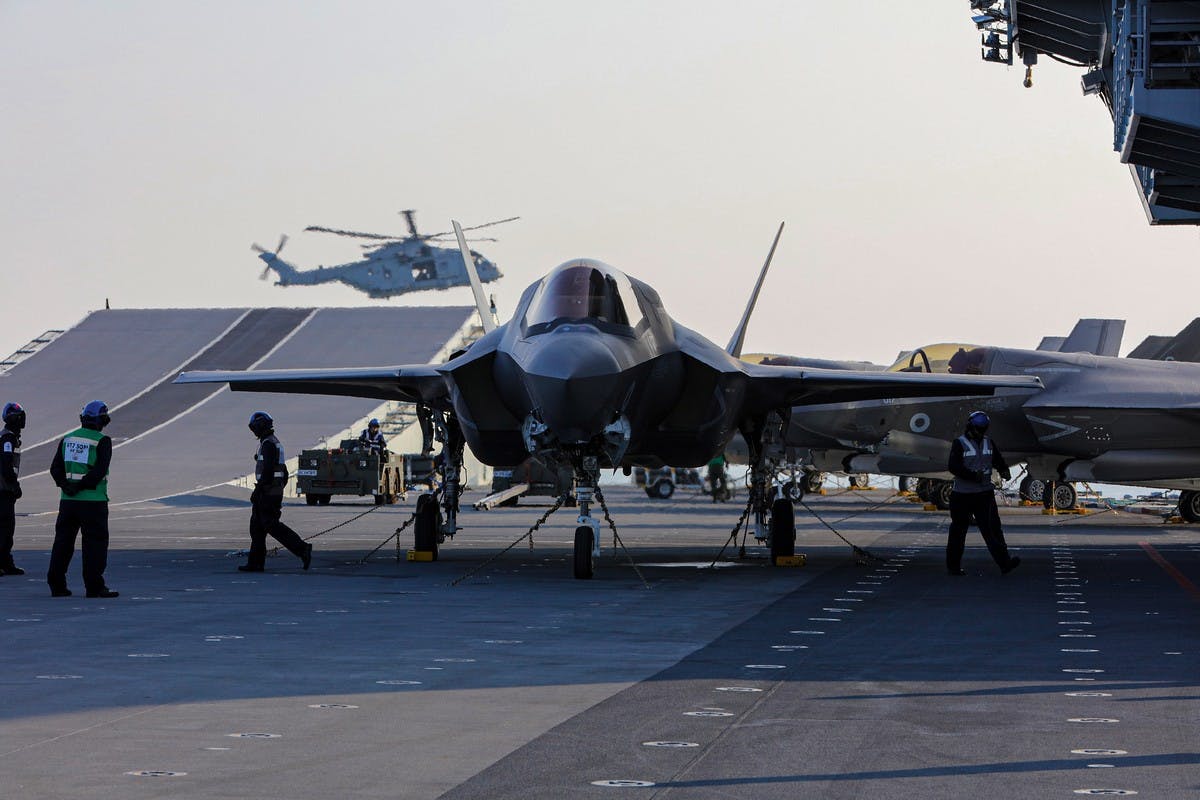
How many sorties per day?
Aircraft Carrier Alliance Chief Engineer, Martin Douglass said:
“The Queen Elizabeth Class can fly 72 fast jet sorties per day – which can be increased if needed – and will give the UK a world class carrier strike capability for many years to come. She also has increased survivability because of the separation and distribution of power generation machinery throughout each ship.
The ship’s Artisan radar can track up to 800 potential targets at the same time and cut through radio ‘clutter’ generated by the equivalent of 10,000 mobile phones. The long range radar can track up to 1,000 contacts across a 250 mile radius both in the air or at sea. It’s an application of technology that’s already been proven on the Type 45s, but this time is linked to the Carrier’s organic capability to control a wide area of air and sea.”
The Queen Elizabeth class mark a change from expressing carrier power in terms of number of aircraft carried, to the number of sortie’s that can be generated from the deck.
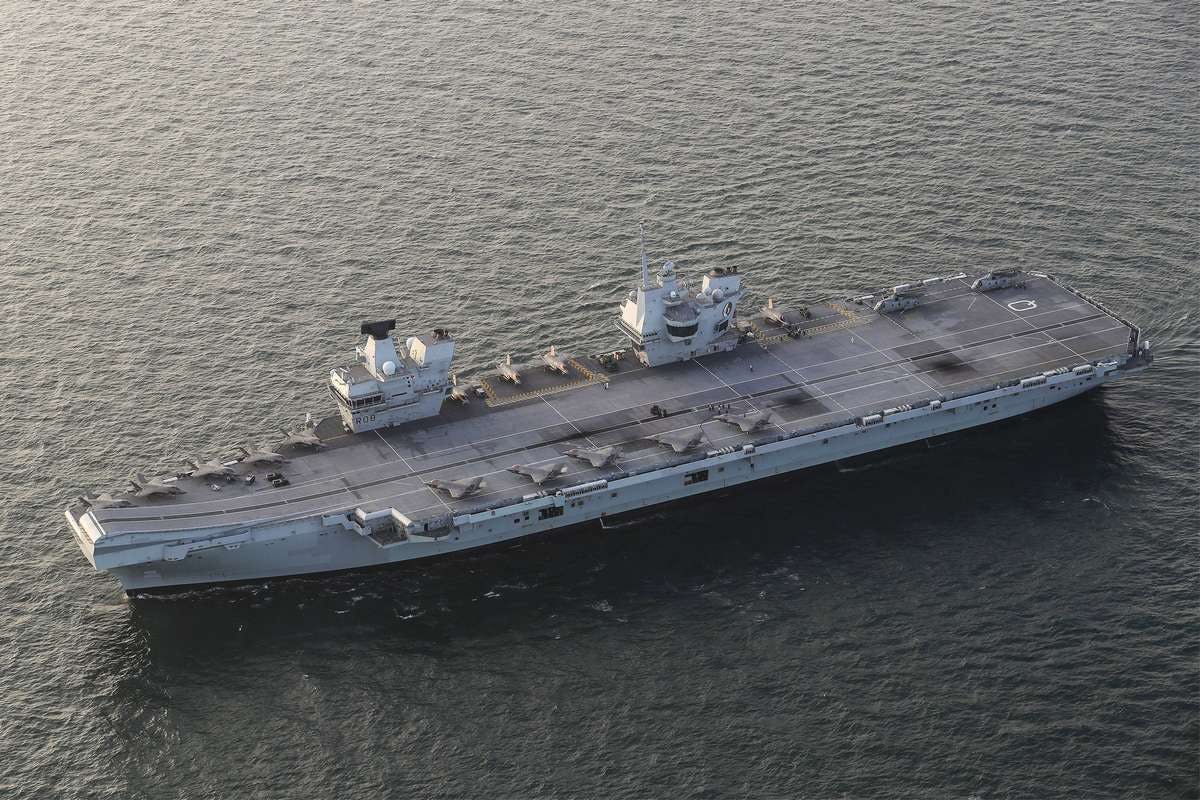
The Key Numbers:
- The project to build HMS Queen Elizabeth and sister ship HMS Prince of Wales cost more than £6 billion.
- The aircraft carrier weighs 70,600 tonnes and has a top speed of 25 knots (this however has been exceeded comfortably).
- Its flight deck is 280 metres long and 70 metres wide – enough space for three football pitches.
- There are 364,000 metres of pipes inside the ship.
- Both HMS Queen Elizabeth and HMS Prince of Wales will keep 45 days’ worth of food in its stores.
- The entire Ship’s Company of 800 can be served a meal within 90 minutes – 45 minutes when at action station.


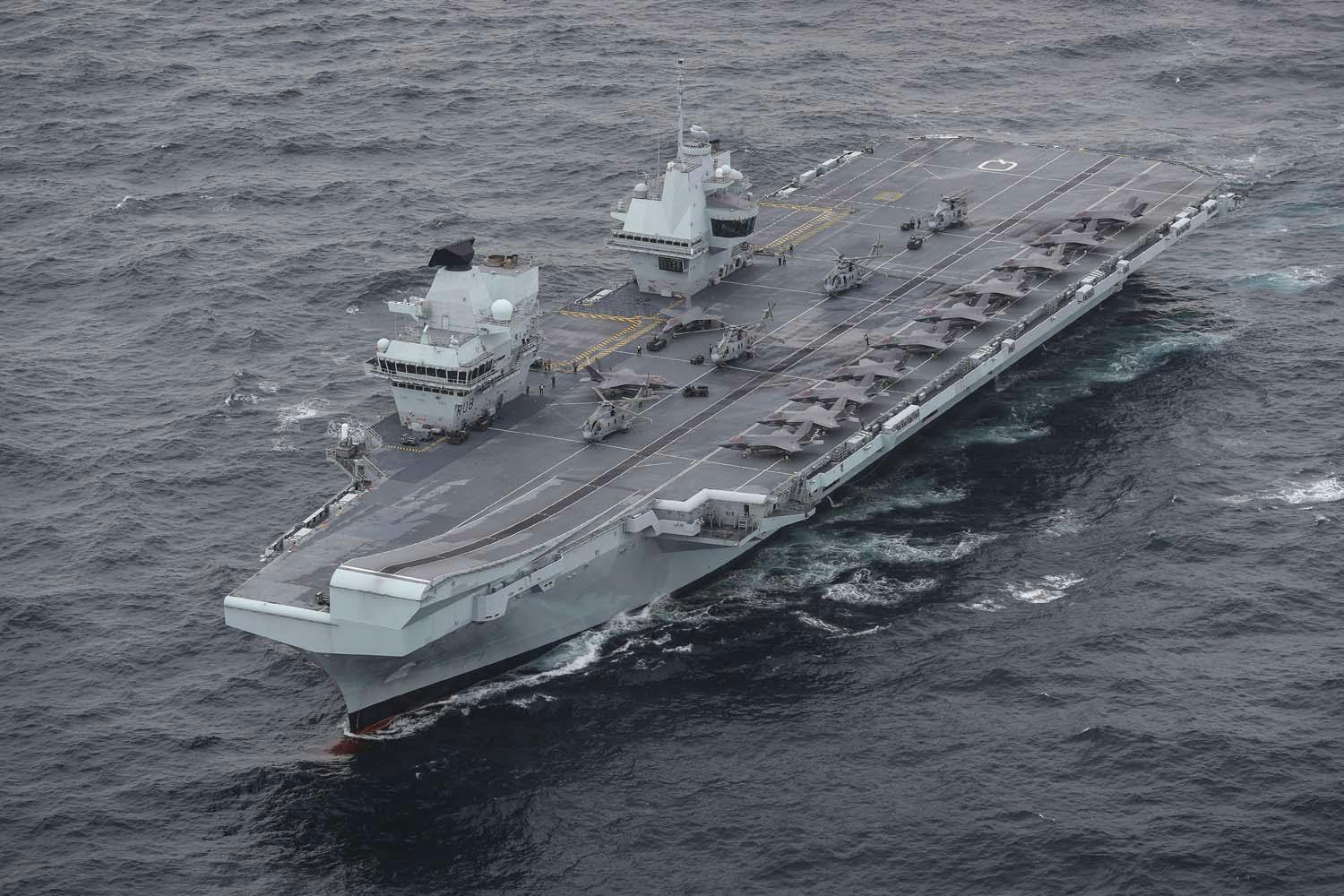
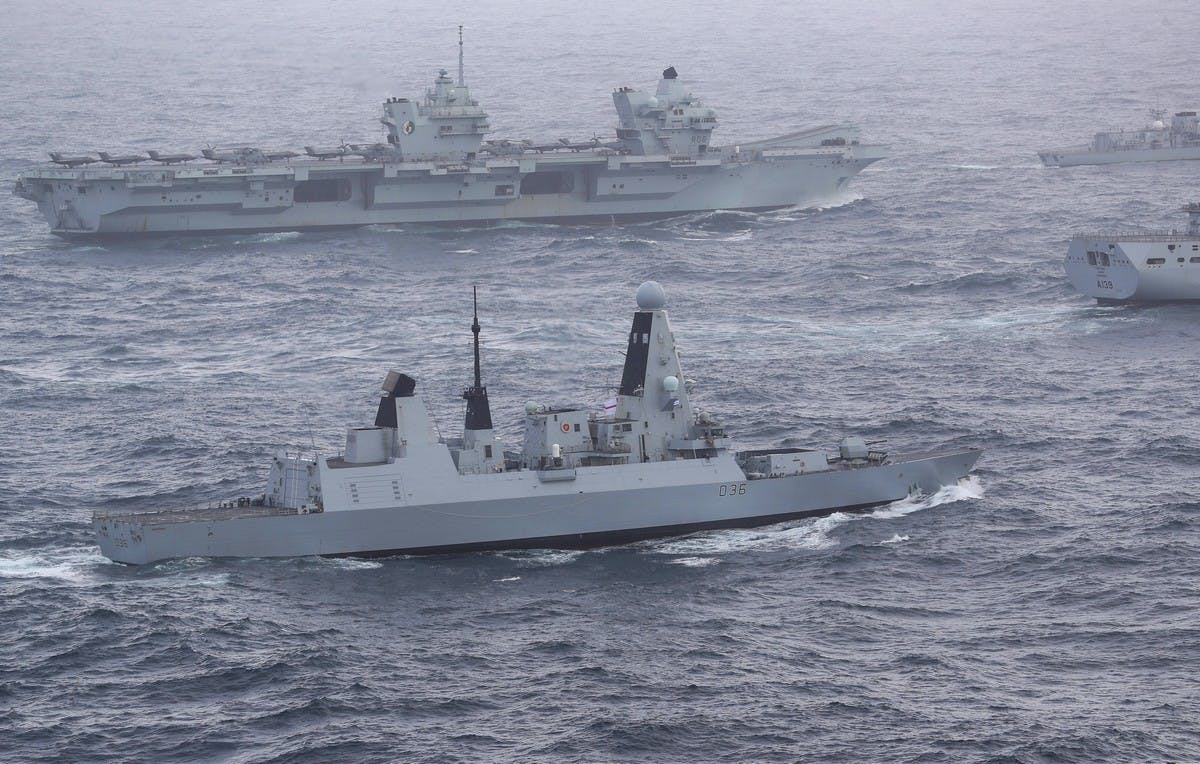



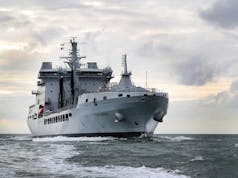
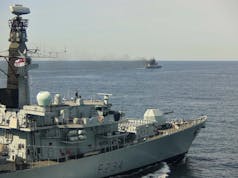
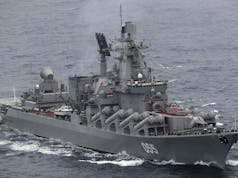
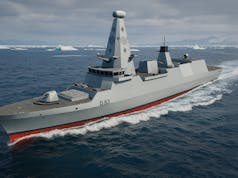

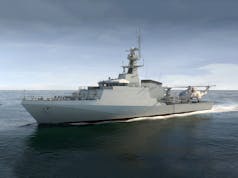


Personally i don’t blame the 1SL for pushing these through at the expense of some of the surface fleet. Once we have them its a capital expense that we don’t need to fork out again for another 50 odd years. They are big and adaptable and they give us influence out of proportion to the size of our nation.
Yes. They offer tremendous clout at relatively modest (in defence terms) cost. Had these been cancelled it would have been impossible to compensate for such a downgrade in capability for the entire RN.
What air defence systems, (apart from aircraft), does the QE class have?
Last I checked, 3 x Phalanx CIWS, although the vessels look to be designed for 4 of them. Pity a small SEA CEPTOR battery wasn’t included.
I don’t see it as being really all that necessary. As a bare minimum the carrier will have an escort of 2 Type 45s and 2 Type 23s. That’s 96 Aster 30 missiles and 64 Sea Ceptors between them.
If that can’t take out an incoming missile then I can’t see really what use half a dozen other Sea Ceptors on the carrier itself will do.
Look at it this way, it is better defended than any RAF station. It moves, and it has Sea Viper and Sea Ceptor ships around it. Along with its own CIWS and EW kit.
When considering the carrier, consider the group around it.
And F35 with ASRAMM AMRAAM and eventually Meteor.
Sorry, you excluded aircraft.
Agree the RAF should consider defence of their reduced operational base numbers. Do RAF operational airfields have missile defence systems? Not sure, it’s probably highly classified.
With the explosion of cruise and intermediate range missiles we see Russia and China deploying on as many platforms as possible I think the RAF needs to start thinking about layered defence and defence of the UK mainland beyond just launch a couple of QRA aircraft once in a while.
The USN doesn’t complacently rely on its escorts despite having a huge fleet. Each carrier has ESSM SAM, RAM SAM & then Phalanx CIWS. Nor do the Chinese rely on just CIWS as they build a fleet expected to exceed the USN. They fit a RAM equivalent.
In WW2 we had the largest fleet in the world at the start but still had one of our fleet carriers(HMS Courageous I think) sunk by Sharnhorst & Gneiseneau, caught with no aircraftusable & just two escorts, quickly overwhelmed.
Don’t tell me with today’s tiny escort fleet we’ll never find ourselves in such an exposed situation. It can only be far more likely. Allies can’t always be relied on.
Sorry, it was HMS Glorious, not Courageous, escorted by HMS Acasta & Ardent.
I do think you could be right. There were several instances of carriers being caught out without escorts or after being crippled. Think HMS Hermes and Audacity, while the USN lost more with at least USS Lexington and some more after they were abandoned by the bulk of the remaining fleet.
These situations do happen.
We had a bigger navy when I was in but most of the time our carriers sailed alone. Now we have a smaller navy will all our ships be tied to safeguarding our carriers?